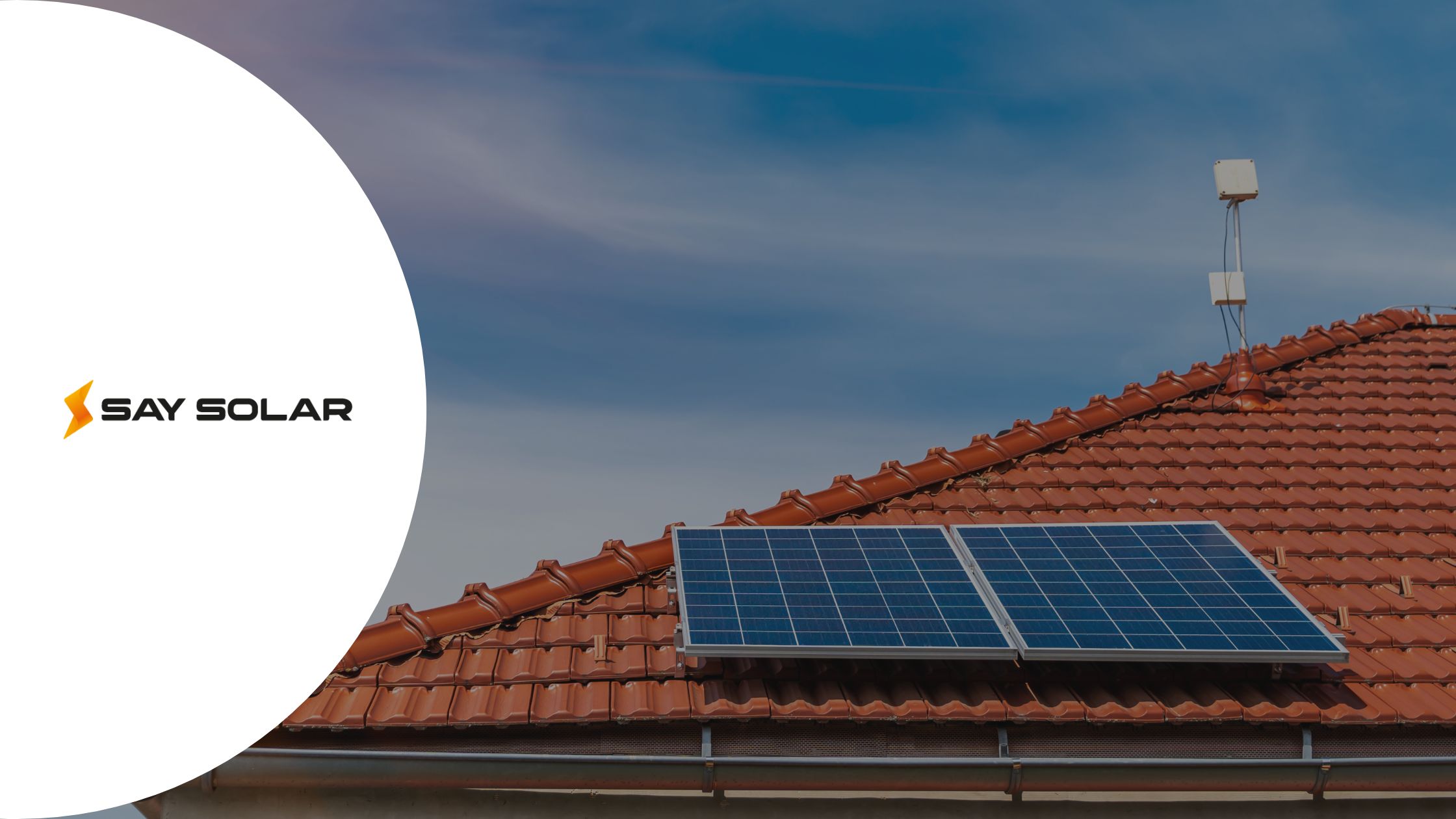What is a solar inverter, how does it work? Types of inverters in solar energy
Solar Inverter
What is a solar inverter?
- Inverters are one of the most important components of a solar energy system.
- An inverter is a power electronic component or circuit that transforms energy output from solar panels, which is in the form of direct current (DC) electricity, into alternate current (AC), which is easily consumable electricity for residential or commercial uses.

Solar Inverter Working Principle
How does a solar inverter work?
- In the solar power system, solar panels generate electricity in the form of DC (direct current).
- A constant voltage is maintained in one direction when electricity is generated via DC. The voltage in an AC circuit changes from positive to negative, causing electricity to flow in both directions.

- Power electronics refers to equipment that controls the flow of electricity, such as inverters.
- In a PV (photovoltaic) system, this component (the inverter) is a critical BOS (balance of system) component that allows the use of normal AC-powered equipment. Among other things, these inverters handle the tracking of maximum power and protection against islanding when used with PV arrays.
The working principle of a solar inverter involves several stages.
- The first stage is the DC-DC boost converter, which increases the voltage of the DC power generated by the solar panels. This is necessary to ensure that the inverter can produce AC power at the required voltage level.
- The DC power is then fed into the inverter’s main stage, which uses pulse-width modulation (PWM) to convert the DC power into AC power. PWM involves switching the DC power on and off at a high frequency, and adjusting the width of the pulses to control the voltage and frequency of the resulting AC power.
- To ensure that the AC power produced by the inverter is of high quality and compatible with the electricity grid, the inverter also includes several additional stages. These may include a filter stage to remove harmonic distortion from the AC power, a synchronization stage to ensure that the AC power is in phase with the grid voltage, and a monitoring stage to detect any faults or issues with the system.
- Overall, the working principle of a solar inverter is complex and involves several stages of conversion and processing. However, by using advanced electronics and control systems, solar inverters are able to efficiently and reliably convert solar power into usable AC power for homes and businesses.
Working Principle of Solar Inverter
A solar inverter converts the DC power generated by solar panels into AC power that can be used to power household or commercial appliances, by using a transformer to boost the voltage and electronic circuitry to convert the DC to AC.
Types of Solar Inverter
There are different types of Inverters used in Solar Power System.
- String Inverters
- Micro Inverters
- Hybrid Inverters
1. String inverters:

Residential solar installations usually consist of one string inverter, which is the most common inverter type. Because it connects solar panels with a string, this type of inverter is known as a “string inverter.”
Generally, these inverters are used when the panels are arranged on a single plane, so the panels do not need to face in different directions. String inverters are more cost-effective than other inverters that are used in solar energy generation. It is possible to use these inverters without any shade at all. But this inverter is not optimal for having solar panels facing different directions.
If you are looking to monitor each panel individually, then the string inverters are not recommended.
1. String inverters:
Residential solar installations usually consist of one string inverter, which is the most common inverter type. Because it connects solar panels with a string, this type of inverter is known as a “string inverter.”
Generally, these inverters are used when the panels are arranged on a single plane, so the panels do not need to face in different directions. String inverters are more cost-effective than other inverters that are used in solar energy generation. It is possible to use these inverters without any shade at all. But this inverter is not optimal for having solar panels facing different directions.
If you are looking to monitor each panel individually, then the string inverters are not recommended.

2. Micro-inverters:

For residential uses, micro-inverters are the first choice.
Microinverters are small units that convert power and are built into each individual solar panel.
The performance of each solar panel can be monitored using micro-inverters. This enables each panel to operate at its best without depending on its neighboring panels.
The power output of the entire solar panel system will be unaffected by nearby walls that provide shade for the majority of the day. Only one panel is impacted by any efficiency decline.
2. Micro-inverters:
For residential uses, micro-inverters are the first choice.
Microinverters are small units that convert power and are built into each individual solar panel.
The performance of each solar panel can be monitored using micro-inverters. This enables each panel to operate at its best without depending on its neighboring panels. The power output of the entire solar panel system will be unaffected by nearby walls that provide shade for the majority of the day. Only one panel is impacted by any efficiency decline.

3. Hybrid Inverters:
In India, hybrid inverters also referred to as “Multi-mode inverters,” are relatively rare and let you connect batteries to your solar power system.
When the solar and batteries use the same inverter and the DC from the solar panels charges the batteries using a DC charger, this device engages with the connected batteries through “DC coupling,” and its electronics manage the battery’s charging and discharging.
3. Hybrid Inverters
In India, hybrid inverters also referred to as “Multi-mode inverters,” are relatively rare and let you connect batteries to your solar power system.
When the solar and batteries use the same inverter and the DC from the solar panels charges the batteries using a DC charger, this device engages with the connected batteries through “DC coupling,” and its electronics manage the battery’s charging and discharging.

importance of a solar inverter
Why are inverters required in a solar power system?
As we all know, in a solar power system, solar panels generate electricity using solar energy.
But we can’t use this electricity directly because solar panels generate DC (direct current) electricity, and in India, we generally use AC (alternative current) for residential or commercial purposes. That’s why we need to convert DC electricity into AC electricity. And here, the inverter is used for converting the DC electricity to AC electricity.
Here are Importance of solar inverter.
Conversion of DC to AC: Solar panels produce DC power, but most appliances and the grid require AC power. The inverter converts the DC power into AC power, which can be used by appliances or fed back into the grid.
Maximizes energy harvest: A good quality inverter can maximize the amount of energy harvested from the solar panels by continuously tracking the maximum power point (MPP) of the panels and adjusting the output accordingly. This ensures that the solar panels are operating at peak efficiency.
Safety: Inverters come with safety features that protect the solar power system and the people using it. These include protection against overvoltage, short circuits, and overloading.
Monitoring and control: Many inverters come with monitoring software that allows the user to track the performance of the solar power system. This can include information on energy production, energy consumption, and other important metrics.
Integration with battery storage: Solar inverters can also be used to integrate battery storage into the solar power system. This allows excess energy produced by the solar panels to be stored for later use, such as during periods of low sunlight.
FAQs
1. How much does a solar inverter cost?
A solar inverter cost is depending on the kilowatt size of the inverter, like 3 kw havells solar ongrid inverter cost is 22,500 rs in November 2022.
2. How long does a solar inverter last?
While the average solar power inverter has a lifespan of five to ten years, they do need routine maintenance to ensure maximum solar PV inverter efficiency.
Get in touch
We are here to answer any question you may have. Feel free to reach via contact form.
J/FF-13, Laxmivilla Green Opp. Shalby Hospital Nava Naroda, Gujarat - 382330 India
Email: digital@ailisenergy.com
Phone: +91 8160 676 453
Submit Your Response Now




